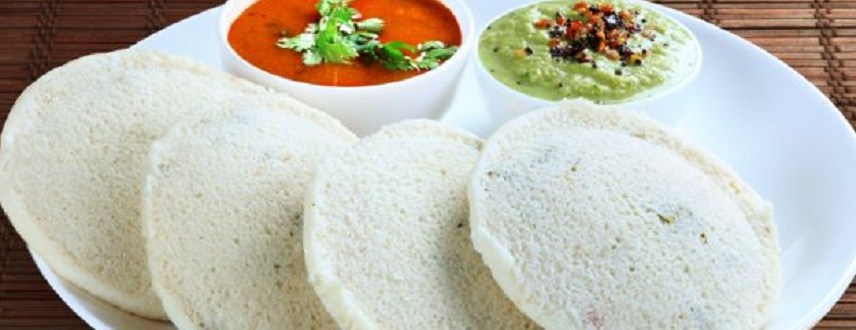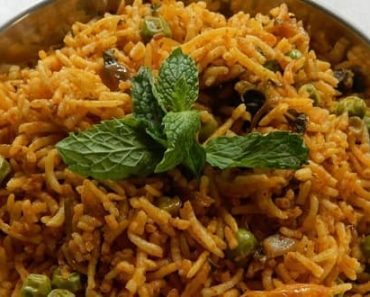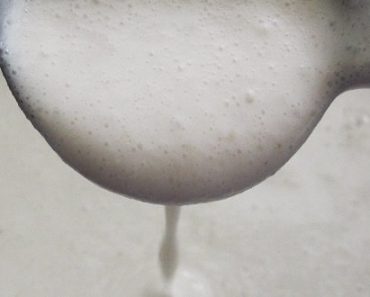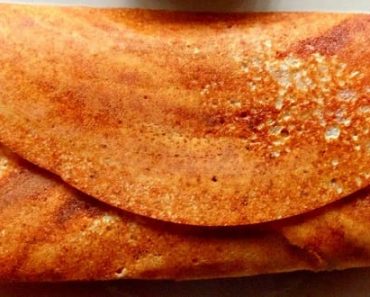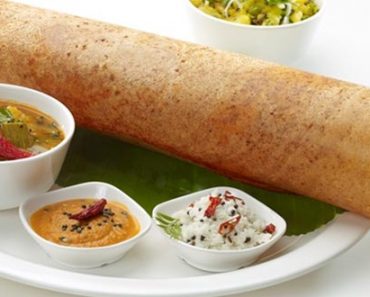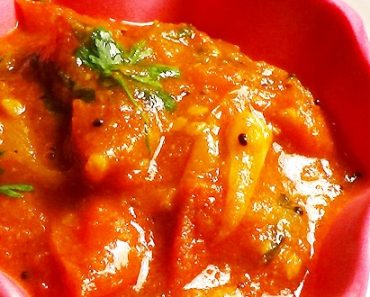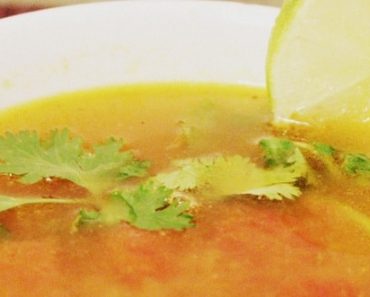Soft, Spongy and Fluffy! This is the exact description of a perfect South Indian idli. Making idli in breakfast is a daily routine in almost all South Indian families. Idlis are easy to make and healthy to eat. This basic Idli recipe is easy to make and fun to experiment with. The common south Indian Idli is made from only two core ingredients Rice and Dal. There is an addition of fenugreek for the flavors and salt for the balance of taste. The Idli batter has to be soft and fluffy, it should not be watery.
Get Daily Dose of Delicious Recipes… Subscribe Now!
The technique to make the Idli is to prepare the batter and allow it ferment properly. Wash and rinse the ingredients. Before you start with Idli, you have to soak each and every ingredient for a minimum of 3-4 hours and then ground them. Soak them in the water and grind them to make the individual mixture. Grind the Rice with the Poha so to prepare a coarse batter.
The addition of Poha makes the Idli soft and fluffy even if the idli batter is old. Again, grind the Dal with the fenugreek seeds and make the smooth batter. Then mix these individual batters with a pinch of salt and keep to ferment. Once batter increases in volume, keep the Idli to steam. Be careful about the amount of water to be added when you are grinding the Dal. The proportion of water changes according to the quality of the dal.
Remarks:
- The preparation time required for Idli recipe is 14-15 hours. And cooking time is 10-15 minutes.
- The measured proportion of ingredients mentioned in this recipe serves 4 people.
- If the batter does not ferment properly then the idlis will become hard to chew. To avoid that add baking soda to your Idli batter.
- If you are using only normal rice, then add baking soda to the batter.
- Also, you need to add baking soda if you are using the ready- made batter.
- The ratio of rice and dal can be varied a little as per your preference.
- If the batter is more, then the leftover batter can be stored in the refrigerator for up to 2-3 days.
- You can skip adding Poha. But if you want to purposefully store the batter, the addition of Poha makes Idli soft even if batter is old.
- The thickness of the Poha does not make any difference to the Idli batter.
- You can season the batter with salt before fermenting in summers and add after fermenting in winters.
Garnish:
Transfer the Idli from the mould to the plate once they are little warm. Serve with hot and spicy vegetable Sambar. Keep the spicy red chutney or mild flavored South Indian coconut chutney to eat with Idli. You can also eat Idli eat plain with the drizzle of little oil. You have these steamed Idli for the snack with your evening tea or coffee. If you like chatpata, then sprinkle some Chaat masala or red chili powder over the Idli before eating it. Whereas, you may also dip it in the homemade tomato ketchup for some tanginess. For all those who like sizzling hot spicy, can have Idli with the garlic chutney.
Garnish the Idli with:
- Green Chutney
- Green Chilies
- Chopped Carrot
- Coriander Leaves
Quick Tip:
- Grind the fenugreek separately and not with the Urad Dal. It would impart a lot of fluffiness and sponginess in the idli.
- Drain the water completely from the rice and Dal after soaking.
- Lesser the water, the better would be your idli batter.
- If you live in cold climate where fermentation is hard, add baking soda.
- Also, in the cold weather idli might get hard, never skip Poha in this case.
- Make the masala dosa stuffed with veggies from the remaining idli batter next day.
- For the fermenting of the batter, avoid using the airtight jars. You can use any stainless steel utensil for fermenting of the Idli batter.
- Do not let your rice or the Dal batter warm up while you are grinding. Otherwise, your idli would become harder.
| Time | Serving | Calories |
| 15 minutes | 3 to 4 people | 49 calories |
Idli is so light on the stomach that it can be eaten anytime for breakfast, brunch, lunch or dinner. It always tastes delicious whether you have it plain or with any other side accompaniment. Nowadays the increasing demand of idli has made it an essential part of hotels menu also. Many restaurants serve idli in breakfast.
The key to make the best Idli is you must not over steam the Idli. Over cooking the Idli makes them dry and hard to chew. Once they are done, let them cool for a while. The restaurant style soft and tender Idli is no tough to make at home. Nowadays a readymade batter of idli is also available in the market. You just need to steam the idlis at your home in the idli mould. If you get the batter from the store, then add baking soda and after some time just begin to cook the Idli. If you are making the batter at home, then choose the good quality of Urad Dal and Idli Rice. The taste, texture, and flavor of the Idli depend entirely on these two main ingredients. Parboiled rice which I have used here give idli a perfect texture and taste but one can use normal rice also.
The perfect Idli has to be round in shape and must be as soft as cotton balls. It is the staple breakfast of every South Indian. The kids are also fond of Idli due to its moon-like shape and milky white color. The healthy and tasty Idli is now a common breakfast in every house. It is because Idli is fully power packed with proteins and nutrients which make it a wholesome food to have in morning. It can be prepared quickly, easily and in a very simple way. Especially when you are in hurry in morning, you can make the batter in the night and just steam idli when you want to eat. It can be packed for tiffin’s, lunch box, picnics and short trips. Both the taste and texture of Idli depend on the correct ratio of Dal and Rice with the proper proportion of water. Just follow the instructions and you will be able to make the best idlis at your home.
These soft while colored Idli’s are the most delighting and comforting food to have at any time of the day. The smooth texture of the idli is what actually makes it great. As we know that Idli is made with two very important ingredients, so for the best results, you have to choose the right dal and rice for making Idli at home. Below are the answers to the few common questions which we have while preparing Idli.
How to Choose Dal for making Idli Batter?
There are various types of Urad dal available in the market which can be used for idli batter. The three basic ones are Split Black Urad Dal, Whole White Urad Dal and Split White Urad Dal. You can use whole white or split white as well but then best is to use split black. The reason many people use it is because it has the skin intact and it’s less manufactured. You need to do a lot of work, soak it, rub it wash it and grind it. But it’s healthier among all other Dal.
How to get best Rice for smooth Idli Batter?
The rice used is the Parboiled or the Idli Rice. You can make idli from the Idli Rava too but making with rice is a different thing. The rice used has to be short grain fat parboiled rice. Get fresh and the best quality rice from the store.
Which is the best time to add Salt in Idli Batter?
You can add salt before you keep for fermenting or after the batter has been fermented. There will be no harm to the batter whether you add salt before or after. The choice of adding salt also depends on the climate you live in. Salts prevents your batter from over fermenting and turning sour.
What has to be the Proportion of Water?
Keep the proportion of the water while grinding the batter only as much as required. If your batter is thin and watery, your Idli would be flat. Idli can only rise and become fluffy only if the consistency of the batter is correct. The extra water will make idli hard and tough.
How to Make Idlis in Pressure Cooker or Pan?
If you do not have the steamer or the Idli Vessel, then do not worry. The same process of steaming Idli can be made in the pressure cooker as well.
- Pressure Cooker: Take the pressure cooker and remove the whistle. Now, place the idli stand in a pressure cooker. Pour 2 cups of water and heat the cooker over medium flame. Once the water is boiled, put the Idli to steam in it the cooker.
- Pan: If you do not want to make in the pressure cooker, then take a pan and switch on the stove. Keep the Idli stand in the pan. Now pour cups of water in the pan. Heat it for some time and let the water boil. Then add idli batter in the moulds and keep in the stand. Cover the pan with a lid and steam idli.

